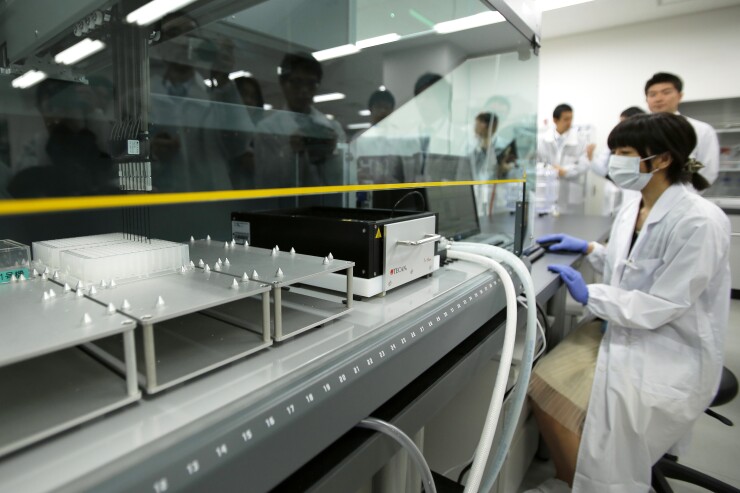Genetic mapping has the potential to offer employees custom wellness programs based on the sequences of a worker’s DNA, such as the propensity to gain excessive weight or suffer a heart attack or stroke, but it could also open the door to costly medical procedures.
Recently, the insurance community has reported a rise in the number of direct-to-consumer and employer-provided genetic testing offered to and completed by employees.
The number of genetic tests has more than doubled from about 30,000 in 2013 to about 65,000 in 2016, and it continues to grow, says Jeffrey Hankoff, M.D., Cigna’s medical officer.

Despite interest from both consumers and employers, experts in the medical community like the American Medical Association and insurers that will most likely pay for the tests worry that genetic testing will lead to excessive costs.
An employee might take a direct-to-consumer genetic mapping test, which can range in cost from around $100 to more than $2,000, and it could deliver inconclusive results that may inspire further testing, says Hankoff.
For example, an employee with a predisposition to breast cancer might opt for a preventative double mastectomy, a procedure that costs about $35,000 before breast reconstruction.
Meanwhile, less than 1% of women with flawed BRCA1 or BRCA2 genes — which account for less than 10% of breast cancer cases — could be diagnosed using a genetic test, according to the National Cancer Institute.
See also: Feds settle first genetic discrimination lawsuit
For self-insured employers, that means footing the bill for excessive tests and procedures. It could also mean employees taking time off from work for lengthy, all-day medical tests.
Genetic testing “may lead to further testing that could be harmful, invasive or unnecessary,” says Hankoff. “Just because the tests are available doesn’t mean they have value.”
The American Medical Association shares a similar sentiment, noting that while genetic testing is a valuable tool for diagnostic and therapeutic decisions, the results can be misinterpreted and lead to unhealthy or unnecessary interventions.
To receive coverage for genetic testing, insurers require that the test have a clinical value and be “medically necessary,” according to Cigna. The insurer says it must also be defined by a medical director as a test required to diagnose or treat an illness, injury, disease or its symptoms.
While benefits like genomic mapping can be purchased through a vendor, it is unlikely to be included in an existing healthcare plan.
Undergoing genetic testing might also cause some unintended consequences for employees, like being rejected from life insurance coverage, says Hankoff.
“If you have abnormal or seemingly abnormal studies, you might have to pay a much higher premium or some insurers might elect to not cover you at all,” he says.
Similarly, employees that participate in genetic testing might not be protected against discrimination for preexisting conditions, which they discovered through the test, under the American Health Care Act.
Hankoff says Cigna is interested in limiting the genetic testing that’s being done.
“The reality is the ability to do the testing is so far more advanced than to understand what those tests actually mean,” he says. “It’s potentially harmful on a number of levels where there’s no clinical indication.”





